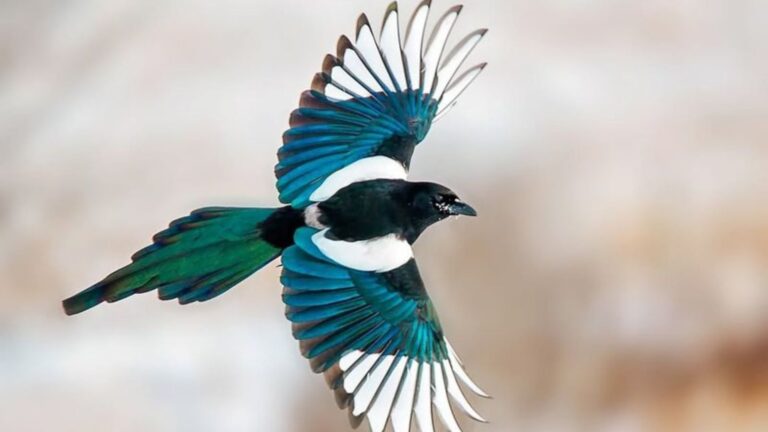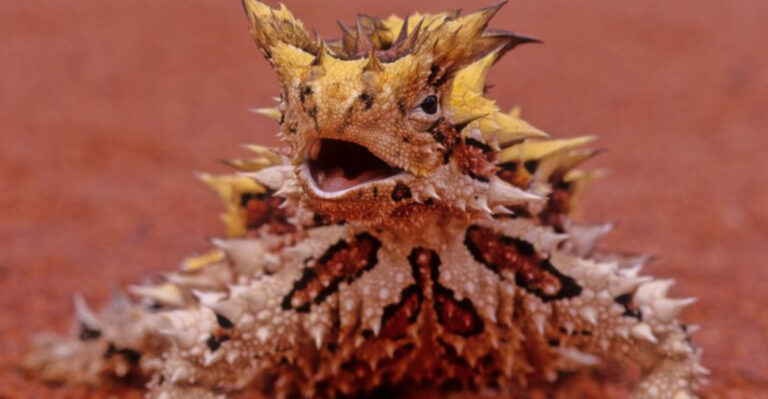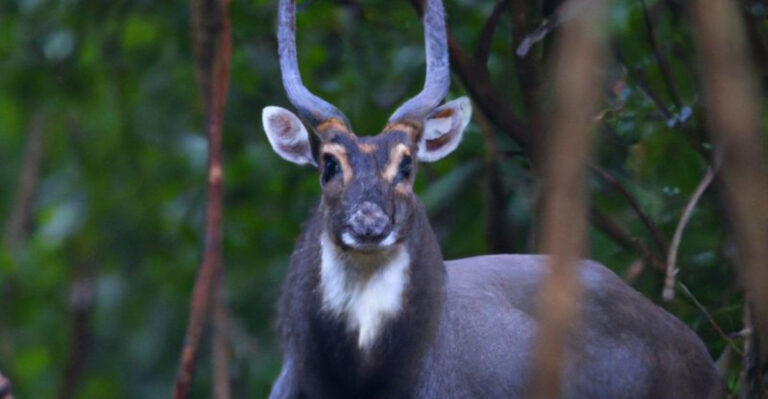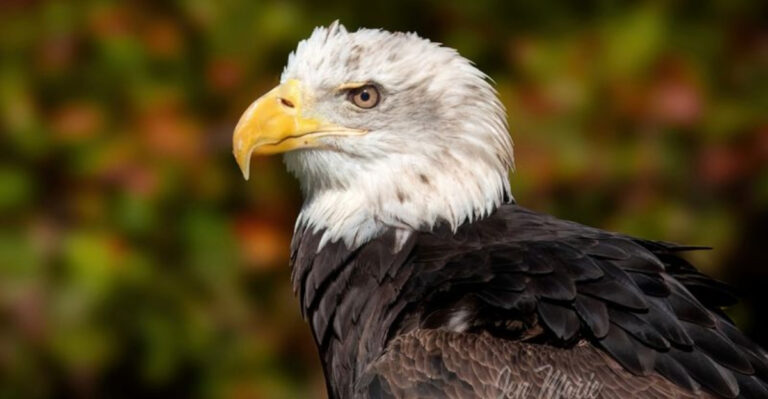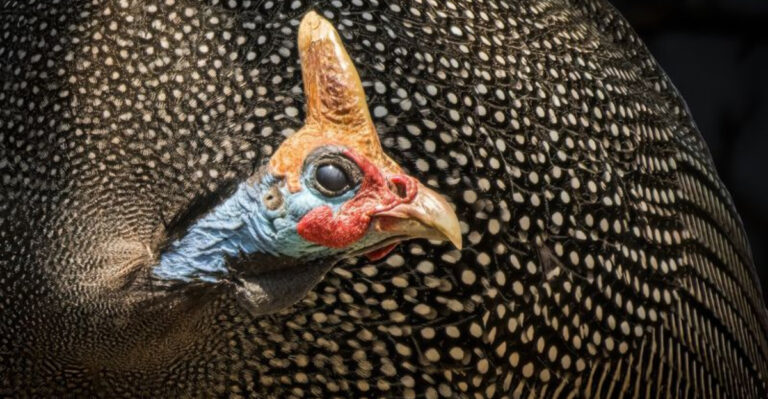The Largest Polar Bear Ever Was As Big As An Entire Football Team Line
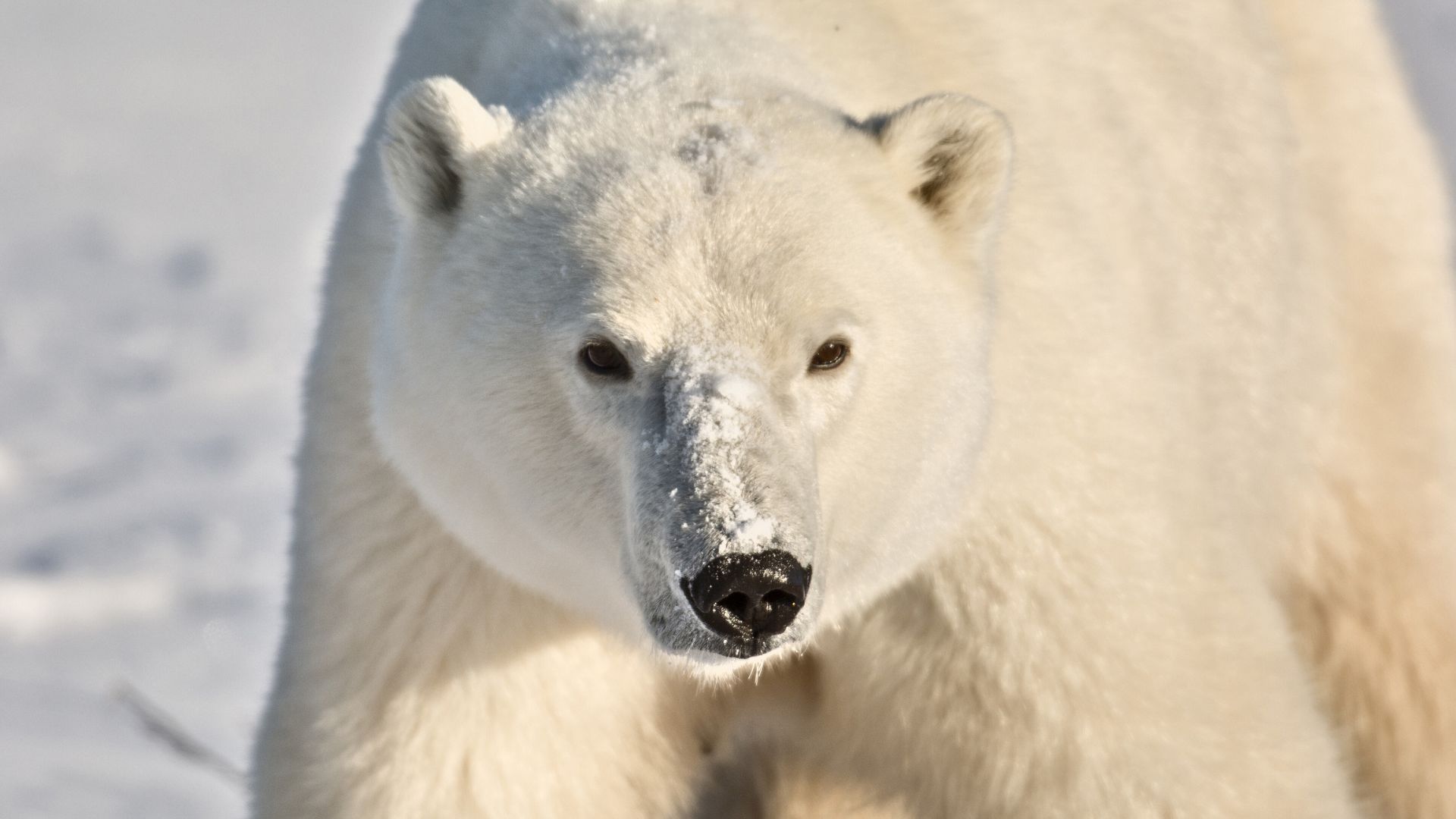
Polar bears are magnificent creatures of the Arctic, renowned for their size and strength.
In this article, we’ll explore fascinating facts about these charming arctic giants and mention the largest polar bear ever recorded.
Grab your parka, and let’s embark on an icy adventure!
1. Why Are Polar Bears So Gigantic In The First Place?

Polar bears rank as the world’s largest land carnivores. Their size is an adaptation to the harsh Arctic environment.
Their large body mass helps them retain heat, which is crucial for survival in freezing temperatures. These bears possess a thick layer of blubber, up to four inches, which insulates them from the cold.
Their immense size also aids in hunting large prey, such as seals. This ensures they consume enough calories to maintain their massive bodies.
Besides, polar bears are incredibly strong swimmers, traveling vast distances across icy waters, which demands significant energy reserves.
2. Keeping The Bulk: How Do These Giants Stay So Heavy?
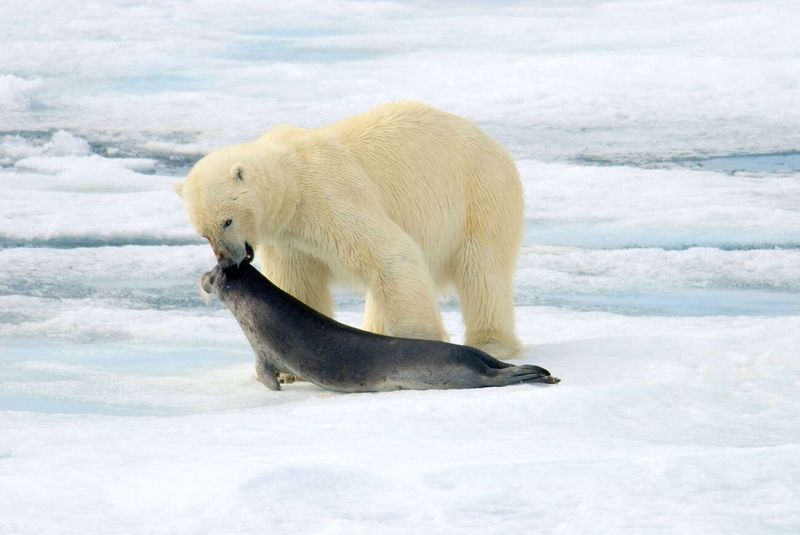
Polar bears maintain their hefty weight through a diet rich in calorie-dense foods.
Seals are their primary prey, packed with fat essential for energy and insulation. They mainly hunt ringed and bearded seals, which provide the necessary nutrients.
These bears also rely on fatty blubber to sustain themselves during fasting periods, especially when sea ice is scarce. Their bodies are adapted to store fat efficiently, allowing them to survive long periods without food.
Despite their bulk, they’re agile hunters, using stealth and strength to catch prey.
3. Big But Nimble: How Do These Arctic Beasts Move Around?
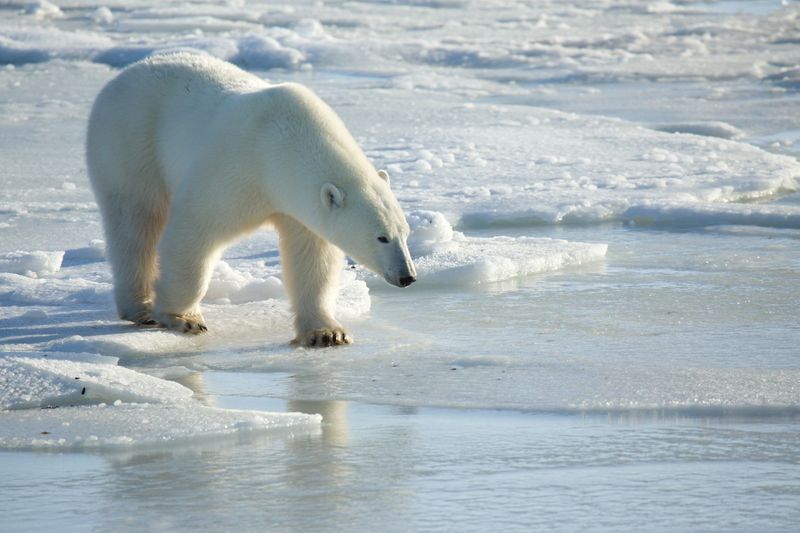
Despite their size, polar bears are surprisingly agile. Their large paws act like snowshoes, distributing weight evenly as they walk on snow and ice.
This adaptation prevents them from sinking into soft surfaces. Strong limbs and sharp claws enable them to grip slippery ice, aiding in hunting and navigation.
Polar bears can run up to 25 miles per hour for short bursts. They are also adept swimmers, capable of covering long distances across frigid waters.
This combination of strength, agility, and endurance ensures their survival in the Arctic wilderness.
4. Interactions With The Environment
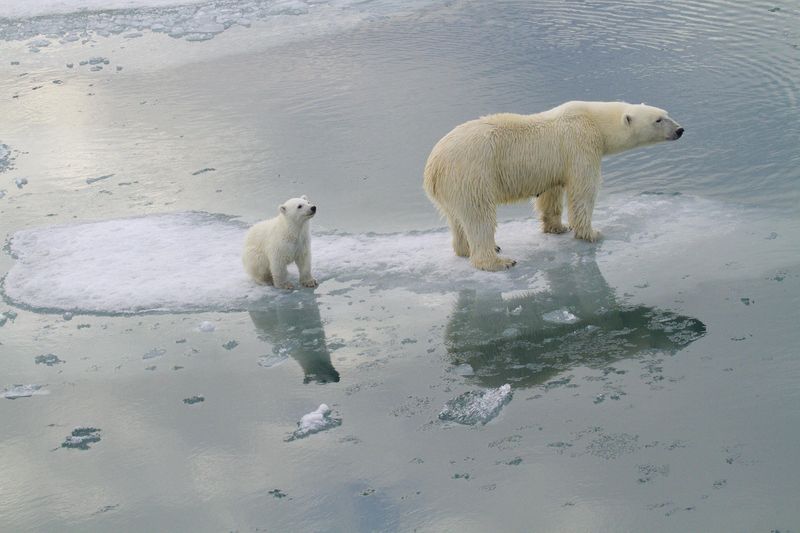
This immense polar bear is more than just a solitary giant; it interacts dynamically with its environment. Its keen senses and behaviors allow it to navigate and dominate the icy realm.
Observing such interactions offers insight into the balance of Arctic ecosystems. This polar bear’s life is intricately intertwined with the cycles and rhythms of its habitat.
5. How Polar Bears Size Up Against Other Bears
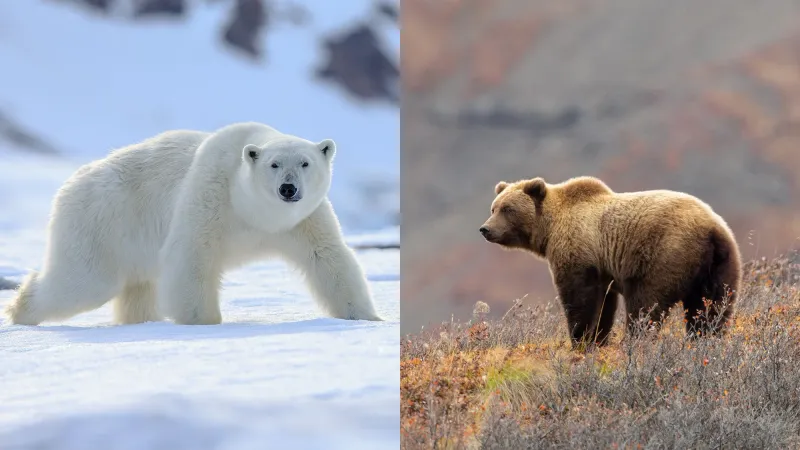
Polar bears are the largest bear species, with adult males weighing between 900 and 1,600 pounds.
They surpass the size of grizzly bears, which are the second largest. Size provides advantages in hunting larger prey and enduring harsh weather.
Despite their size difference, both species share similarities, like formidable strength and excellent senses.
However, polar bears are more specialized for life in icy environments, with adaptations like water-repellent fur and a layer of blubber, setting them apart from their brown cousins.
6. Meet The Largest Polar Bear Ever – A True Arctic Titan
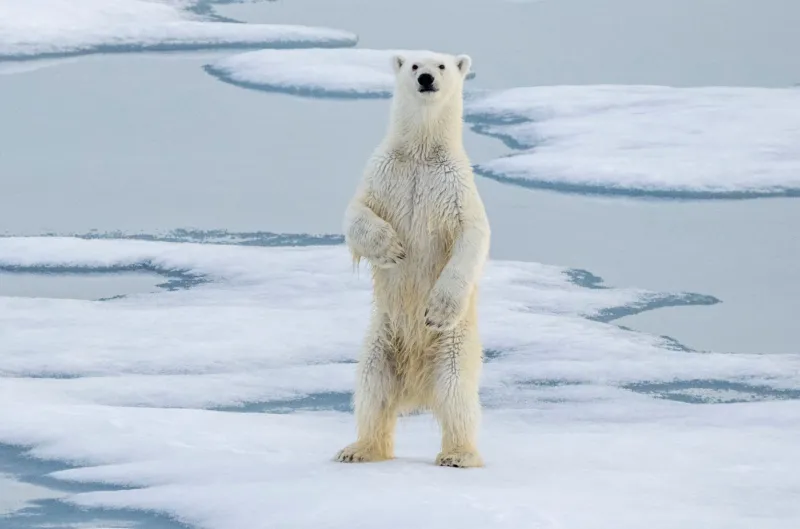
The largest polar bear ever recorded was a massive male weighing 2,209 pounds. Found in Alaska in 1960, this giant stood more than 11 feet tall when on its hind legs.
To put that into perspective, with an average man weighing about 200 pounds, this bear was as heavy as 11 grown men!
Its extraordinary size demonstrated just how large polar bears can grow, reflecting their incredible adaptation to life in the harsh Arctic.
This record-breaking bear remains a stunning example of nature’s extremes, reminding us of the remarkable creatures that inhabit our world.
7. Saving The Giants: The Future Of Polar Bears
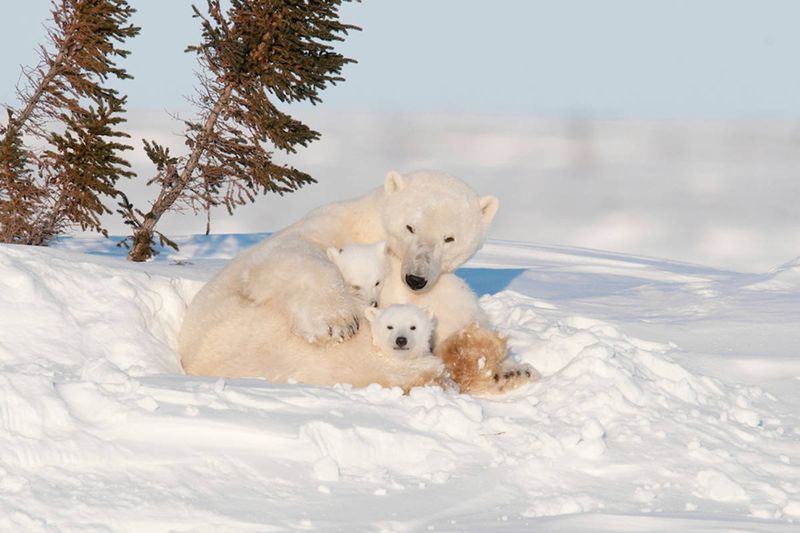
Polar bears face significant threats due to climate change. Shrinking sea ice limits their hunting grounds, affecting their ability to find food. Conservation efforts are crucial to preserving this iconic species.
Initiatives include protecting habitats, reducing greenhouse gas emissions, and supporting sustainable practices in Arctic regions.
Public awareness and global cooperation are vital for ensuring polar bears’ survival.
By addressing these challenges, we can help secure a future where polar bears continue to roam the Arctic, maintaining their role as apex predators and symbols of wild beauty.

